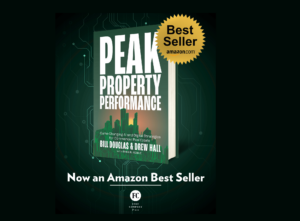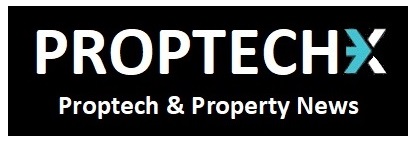Week 20: Connect – Collect – Control: The Essential Data & Digital Infrastructure Framework for CRE
In this weekly series, we explore how the commercial real estate industry is being transformed by data and digital infrastructure. Guided by the principles in Peak Property Performance, we unpack a new idea every week to help owners unlock value, reduce risk, and future-proof their portfolios. Learn more about OpticWise and Bill Douglas, the authors of this series.

Most building owners don’t realize they already have the ingredients for a digital advantage—they just don’t have the recipe.
Silos, outdated networks, and disconnected point solutions prevent assets from reaching their full potential. Meanwhile, tenants are asking for better experiences, operators are drowning in data they can’t use, and leadership teams are under pressure to show measurable impact from tech spend.
This is where the Connect – Collect – Control framework comes in. It’s the backbone of modern Data & Digital Infrastructure (DDI), and it represents a strategic progression toward intelligence, automation, and operational excellence.
Let’s unpack each layer.
1. Connect – Establish the Digital Plumbing
You can’t manage what you can’t measure—and you can’t measure without connectivity.
Connect is about building the secure, property-wide digital foundation that links devices, sensors, systems, and people. This means managed WiFi, Ethernet, IoT controllers, gateways, and network segmentation that enable real-time communication across all building layers.
At OpticWise, we call this the BoT® layer—the Building of Things®. When done right, it enables seamless integration between systems that were never designed to speak to each other, creating a canvas for interoperability and innovation.
2. Collect – Activate the Right Data
Once your digital plumbing is in place, the next step is to Collect the data that flows through it.
This includes sensor data, system performance metrics, occupancy trends, environmental readings, user behavior, and much more. But not all data is valuable. Owners must focus on use-case-driven data collection—prioritizing data that supports tenant experience, predictive maintenance, ESG goals, and NOI optimization.
Importantly, this also means structuring data in ways that are standardized, interoperable, and usable by both machines and humans.
3. Control – Unlock Intelligence & Action
Connectivity and collection are only the beginning. The final and most impactful layer is Control.
This is where owners move from passive systems to proactive optimization. With a well-architected DDI backbone, buildings can respond dynamically to conditions in real time—automating HVAC schedules, surfacing tenant experience insights, allocating bandwidth intelligently, or flagging anomalies before they become failures.
Control means owners are no longer at the mercy of their tech vendors. They’re in charge of the digital and physical environment—with full visibility, governance, and decision-making power.
DDI Isn’t an IT Project. It’s an Asset Strategy.
The Connect – Collect – Control model is not a one-time upgrade—it’s a strategic operating model for 21st-century buildings.
It’s how owners reclaim control of their data and systems. It’s how they eliminate waste and unlock NOI. It’s how they shift from reacting to anticipating. And most importantly, it’s how they begin to align every tech investment with asset performance.
Ready to Assess Your DDI Maturity?
A great place to start is with the PPP Digital Infrastructure Review—a practical assessment that shows where your portfolio stands today and what steps will unlock greater returns tomorrow.
Let’s stop guessing. Let’s connect, collect, and control.
Andrew Stanton CEO Proptech-PR
Andrew Stanton Founder & Editor of 'PROPTECH-X' where his insights, connections, analysis and commentary on proptech and real estate are based on writing 1.3M words annually. Plus meeting 1,000 Proptech founders, critiquing 400 decks and having had 130 clients as CEO of 'PROPTECH-PR', a consultancy for Proptech founders seeking growth and exit strategies. He also acts as an advisory for major global real estate companies on sales, acquisitions, market positioning & operations. With 200K followers & readers, he is the 'Proptech Realestate Influencer.'













